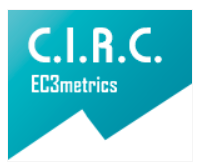Cognitive communicative disorder
Trastorno Cognitivo Comunicativo
Main Article Content
Currently, cognitive communicative disorder is a very recurrent diagnostic label in the task of speech therapist. However, in the clinical and academic context that includes both students and professionals, the clinical, etiological and concomitant conditions are not clear or widespread throughout the guild. Historically, cognitive communicative alterations have been described as those communication difficulties related to linguistic deficits, especially in syntax, semantics and/or metalinguistic abilities, as well as non-linguistic cognitive functions, mainly attention, memory and executive functions. The most common causes of cognitive communicative disorder are Alzheimer's disease, strokes, brain tumors and head injuries. Due to the confusion that occurs in many cases, the first distinction that must be made is between aphasia and cognitive communicative disorders, a distinction that presents as the main indicator the presence of anomia, nuclear aphasia symptom. There is currently a growing empirical and clinical interest in integrating cognitive domains of attention, memory and executive functions in individuals with aphasia. What results in a recognition of the concomitance that may exist between aphasia and cognitive communicative disorder
Downloads
Publication Facts
Reviewer profiles N/A
Author statements
Indexed in
- Academic society
- Bogotá: Corporación Universitaria Iberoamericana
- Publisher
- Bogotá: Corporación Universitaria Iberoamericana
Article Details
Ambiado, M. N. (2019). Uso diferencial de funciones ejecutivas en estudiantes con trastorno específico del lenguaje al inicio de la escolarización primaria.
Ardila, A. (2005). Las Afasia. Guadalajara, México.
ASHA, A. S.-L.-H.-L.-H. (1997-2019). Making effective communication, a human right, accessible and achievable for all. Obtenido de https://www.asha.org/slp/cog
Bermejo, R. y. (1993). Demencias: Conceptos Actuales. . Madrid, España: Ediciones Díaz de Santos.
Catani, M. J. (Jan de 2005). Perisylvian language networks of the human brain. Ann Neurol, 57(1), 8-16. doi:10.1002/ana.20319
Christensen, S. y. (Jul de 2010). Verbal and non-verbal working memory in aphasia: What three n-back tasks reveal. Aphasiology,, 24(6-8). doi:DOI: 10.1080/02687030903437690
Coelho, C. D.-S. (Octubre de 1996). Treatment Efficacy: Cognitive-Communicative Disorders Resulting From Traumatic Brain Injury in Adults. Journal of Speech and Hearing Research, 39, S5-S7.
Cuetos, F. (2012). Neurociencia del Lenguaje. Madrid, España: Editorial Médica Panamericana.
Cuetos, F. y.-N. (2009). BETA batería para la evaluación de los trastornos afásicos. Madrid, España: Instituto de orientación psicológica asociados.
Estévez, A. y. (1995). Enfermedad de Alzheimer: Cuando se acaba la memoria. . Barcelona, España:: Colimbo Ediciones.
Frankel, T. P. (2007). Executive dysfunction as an explanatory basis for conversation symptoms of aphasia: A pilot study. Aphasiology, 21(6-8), 814-828,. doi:https://doi.org/10.1080/02687030701192448
Fucetola, R. C. (2009). Unravelling nonverbal cognitive performance in acquired aphasia. Aphasiology, 23(12). doi: DOI: 10.1080/02687030802514938
Goodglass, H. y. (2005). Evaluación de la Afasia y de Trastornos Relacionados. . Madrid, España: Editorial Médica Panamericana.
Helm-Estabrooks, N. B. (1995). Relationship between cognitive performance and aphasia severity, age and education: females versus males. Brain and language, 1, 139-141.
Helm-Estabrooks, N. J. (2002). Cognition and aphasia a discussion and a study. 35, 171-186. doi: 10.1016/s0021-9924(02)00063-1
Helm-Estabrooks, N. y. (2005). Manual de la Afasia y de Terapia de la Afasia. Madrid, España:: Editorial Médica Panamericana.
Hernández, J. M. (2006). Demencia tipo Alzheimer y Lenguaje. : . Bogotá, Colombia: Colección Lecciones de Rehabilitación y Desarrollo Humano.Centro Editorial Universidad del Rosari.
Lapuente, F. S. (2012). Tratado de neuropsicología clínica. Aplicaciones clínicas de la teoría y la evaluación neurocognitiva. Estudio de casos y autoevaluaciones. . Murcia, España: Neurohealth.
Lopera, R. F. (2008). Funciones ejecutivas: aspectos clínicos. Revista Neuropsicología, Neuropsiquiatría y Neurociencias, 8(1), 59-76. Obtenido de https://dialnet.unirioja.es/servlet/articulo?codigo=3987492
Ministerios de Salud, Guía clínica AUGE. Accidente cerebro vascular isquémico en personas de 15 años y más. (2013). Obtenido de https://www.minsal.cl/portal/url/item/7222754637e58646e04001011f014e64.pdf
Murray, L. (May de 2012). Attention and Other Cognitive Deficits in Aphasia: Presence and Relation to Language and Communication Measures. American Journal of Speech-Language Pathology, 21, S51–S64. doi: 10.1044/1058-0360(2012/11-0067)
Rodríguez, J. I.-2. (2012). Instrumento de evaluación del lenguaje en adultos con afasia o trastorno cognitivo comunicativo (IELAT). Revista Árete, 12( No. 1), 153-161.
Van Mourik, M. V. (1992). Cognition in global aphasia: Indicators for therapy. Aphasiology, Volume 6(5), 491-499. doi:https://doi.org/10.1080/02687039208249486
Wright, H. D. (23 de Jun de 2007). Processing distinct linguistic information types in working memory in aphasia. Aphasiology, 802–813. doi:doi: 10.1080/02687030701192414

















